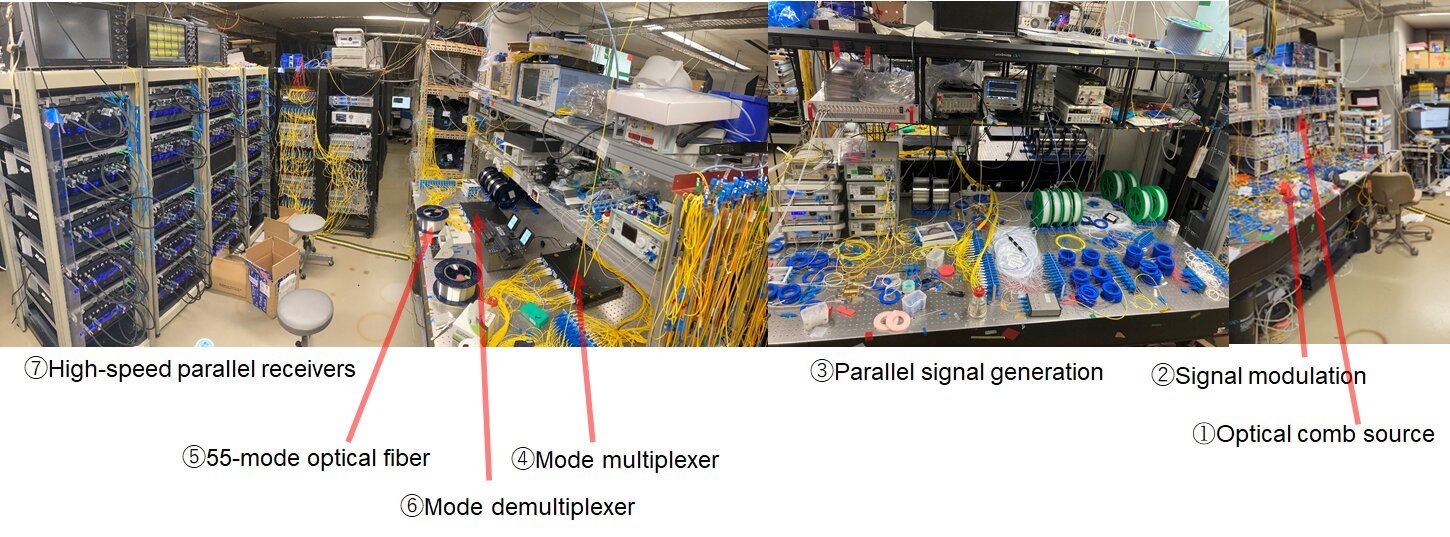The world's first 55-mode transmission was performed at a record data rate of 1,53 petabits per second on any standard diameter optical fiber.
A new 55-mode fiber enables extremely high spectral efficiency with high data rate achieved using only the most common optical communications band (C-).
This demonstration demonstrated the potential of multicasting in future high-capacity networks.

A team researchers from the Network Research Institute of the National Institute of Information and Communications Technology ή NICT, Ιαπωνία) με επικεφαλής τον Georg Rademacher σε συνεργασία με τη Nokia Bell Labs (USA), the Prysmian Group (Prysmian, France and the Netherlands) and the University of Queensland (Australia) achieved the world's first experiment of high-capacity transmission with multiplexing technology using 55 functions.
The experiment reports a data rate of 1,53 petabits per second, a record in any standard cladding diameter (0,125 mm) fiber optic to date.
55-mode has been successfully used in all commercially adopted fiber optic (C-band) transmission packages, and a dramatic increase in spectral efficiency has been observed compared to conventional fiber.
This demonstration serves as an important step for the maturity of high-speed multi-mode transmission technology, the development of Beyond 5G and the subsequent information and communication infrastructure technology.
The results of this experiment were accepted as presentation after the deadline at the 48th European Conference on Optical Communication (ECOC 2022) and were presented on Thursday, 22 September 2022.





